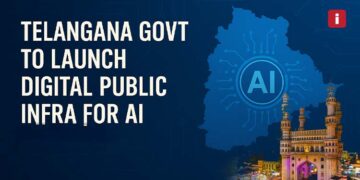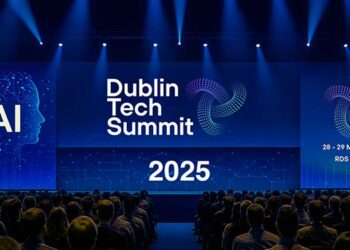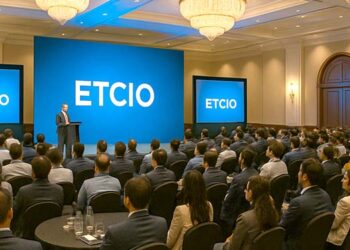AI in Motion
As artificial intelligence continues to redefine the future, the Embedded Vision Summit 2025—held from May 20–22 at the Santa Clara Convention Center—emerged as the world’s most significant gathering for engineers, developers, and executives building AI-powered vision into edge devices and real-world systems. With a strong focus on computer vision, edge AI, and visual perception, this year’s summit was all about pushing boundaries: from machine learning in resource-constrained environments to the latest in vision-language models.
If you’re in the business of building smarter devices, autonomous systems, or perceptual edge computing, this summit wasn’t just a conference it was the roadmap to the future.
What is the Embedded Vision Summit?
The Embedded Vision Summit is an annual event that brings together global leaders in computer vision, AI, deep learning, embedded systems, and edge computing. Organized by the Edge AI and Vision Alliance, the summit offers a unique blend of technical deep-dives, hands-on workshops, business strategy insights, and an expo hall packed with cutting-edge innovations.
Over the course of three days, attendees gained access to:
- 85+ sessions across four content tracks
- 100+ industry-leading speakers
- 70+ exhibiting companies
- Hundreds of demos and product showcases
- Countless networking opportunities
Thought Leadership in Action
Trevor Darrell – Co-founder of Berkeley AI Research (BAIR)
Trevor Darrell delivered a powerful keynote on multimodal intelligence, emphasizing how vision-language models (VLMs) like CLIP and Flamingo are accelerating cross-sensory understanding in edge devices. His insights around real-time processing and edge-efficient AI architectures resonated with developers looking to minimize latency without compromising performance.
Gérard Medioni – VP & Distinguished Scientist at Amazon
From revolutionizing product recommendations to enhancing Prime Video’s content workflows, Gérard Medioni shared how Amazon is deploying large-scale AI vision systems. He spoke about balancing deep learning performance with system reliability, cost-efficiency, and user experience—a rare insider glimpse into AI at the enterprise level.
Content Tracks | Something for Every Innovator
The summit was structured around four core tracks, each tailored for different roles in the vision-AI development pipeline:
1. Fundamentals
For attendees new to vision and AI, this track offered foundational learning:
- What is computer vision?
- How does neural network training work?
- What are CNNs, RNNs, and transformers?
2. Technical Insights
This deep-dive focused on algorithms, frameworks, and models used to deploy AI at the edge. Key sessions included:
- Efficient neural network compression
- Model quantization for embedded inference
- Training robust vision systems for diverse environments
3. Business Insights
Perfect for executives, PMs, and innovation leads. Topics included:
- Time-to-market strategies for vision-based products
- ROI from computer vision in retail and manufacturing
- Legal and ethical considerations in AI deployment
4. Enabling Technologies
The tools and components that power it all. Sessions explored:
- Custom silicon for vision tasks
- Edge accelerators and GPUs
- Sensor fusion and real-time vision APIs
Workshops & Hands-On Demos: Learning by Doing
Beyond presentations, attendees rolled up their sleeves for interactive workshops. Some notable ones included:
Training Vision-Language Models from Scratch
A hands-on lab exploring how to build and fine-tune VLMs using open-source toolkits and transformer-based architectures.
Edge AI Deep Dive™
This was a high-intensity technical workshop featuring expert guidance on optimizing deep learning models for inference on low-power devices. Topics like ONNX, TensorRT, and YOLOv8 took center stage.
Expo Hall & Product Showcases: Innovation Everywhere
With over 70 companies exhibiting, the expo hall buzzed with energy and breakthroughs. Some standout showcases:
- Qualcomm: Demonstrated Snapdragon-powered AR glasses with ultra-low-latency vision pipelines.
- NVIDIA: Highlighted Jetson Orin’s capacity to run multiple AI models simultaneously in real time.
- Luxonis: Presented spatial AI cameras capable of depth perception and gesture tracking in embedded form factors.
- Synaptics & Arm: Partnered to reveal edge-ready inference chips with integrated vision processors, perfect for smart home and industrial IoT devices.
Whether you were looking for the right hardware-software stack or exploring partnerships, this was the place to be.
Real-World Use Cases: Vision with Purpose
Embedded Vision Summit wasn’t just about concepts—it celebrated real-world applications making tangible impact:
- Healthcare: Vision systems aiding early cancer detection in point-of-care diagnostic tools
- Automotive: ADAS cameras running AI in real time for lane assist, pedestrian detection, and sign reading
- Retail & Logistics: Inventory management using AI-powered object recognition
- Robotics & Drones: SLAM and gesture-based control using embedded vision solutions
These use cases demonstrate that AI vision is not the future—it’s the present.
Networking and Collaboration: Where Ideas Collide
From morning coffee meetups to evening receptions, the summit offered countless chances to connect. Developers, C-suite execs, investors, and researchers exchanged insights, formed alliances, and sparked joint ventures.
The event even had AI matchmaking tools to connect attendees based on shared goals or technologies, maximizing every conversation’s potential.
Sustainability, Ethics, and AI Regulation
In a dedicated panel, speakers from Intel, Meta, and open-source foundations discussed the importance of ethical AI, particularly in visual surveillance, facial recognition, and data privacy. Key takeaways:
- Transparency in datasets
- Bias reduction in vision models
- Sustainable AI computing with energy-aware models
It was clear: responsible AI was just as much a priority as innovation.
Final Thoughts: Why This Summit Matters
The Embedded Vision Summit 2025 wasn’t just another tech conference—it was a vision for what’s next in AI, literally and figuratively. From multimodal intelligence to ultra-efficient edge computing, this summit proved that the intersection of AI and vision is where some of the most exciting product development is happening today.
If you’re building smarter cameras, autonomous robots, predictive healthcare tools, or interactive consumer devices, the insights from this summit could define your next big breakthrough.
Want the Full Breakdown?
Read our post-event insight deck & visual report at InsightTechTalk.com.
Subscribe to our newsletter for more events like this.
Don’t forget to follow us on LinkedIn and Instagram for behind-the-scenes photos and interviews.













































